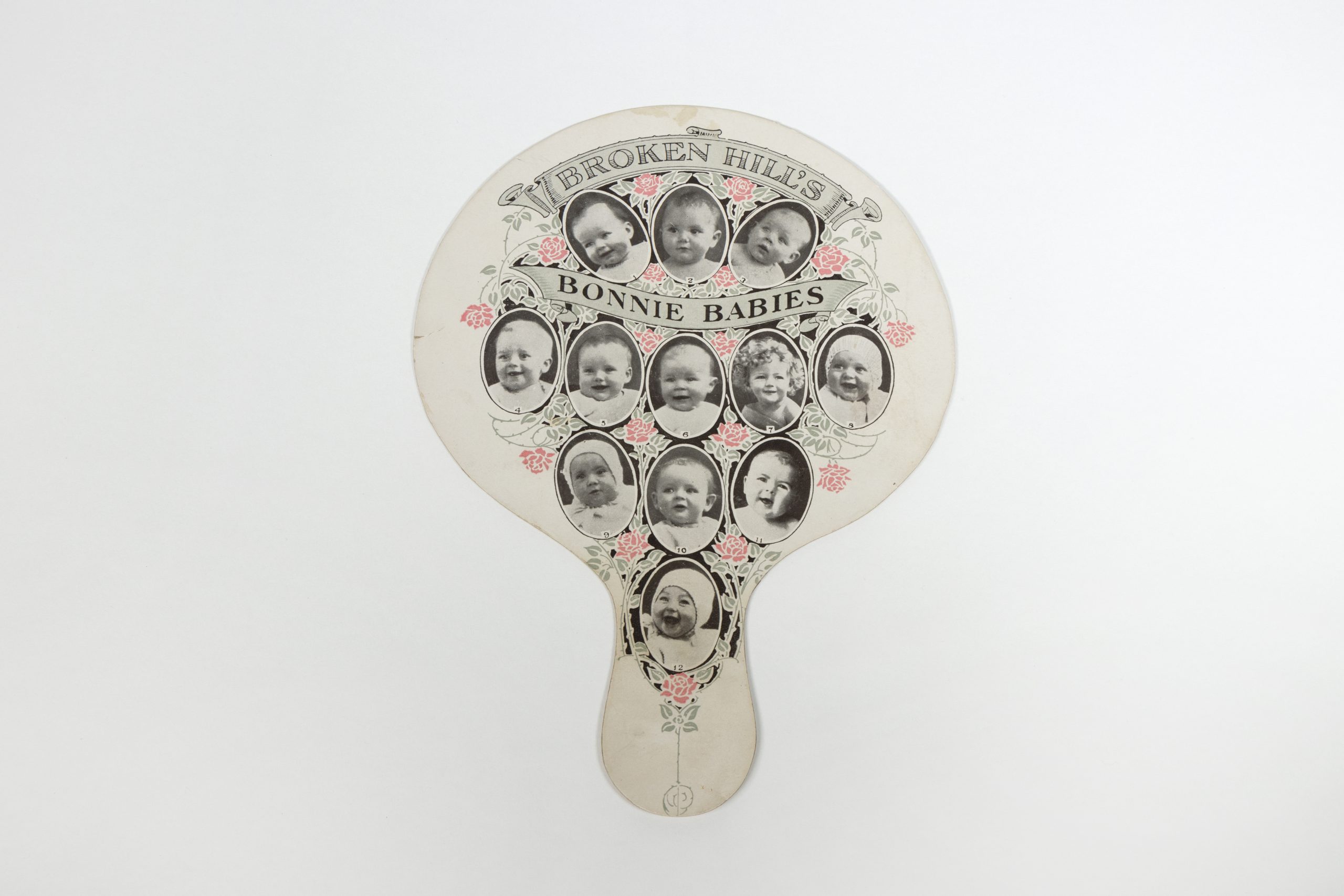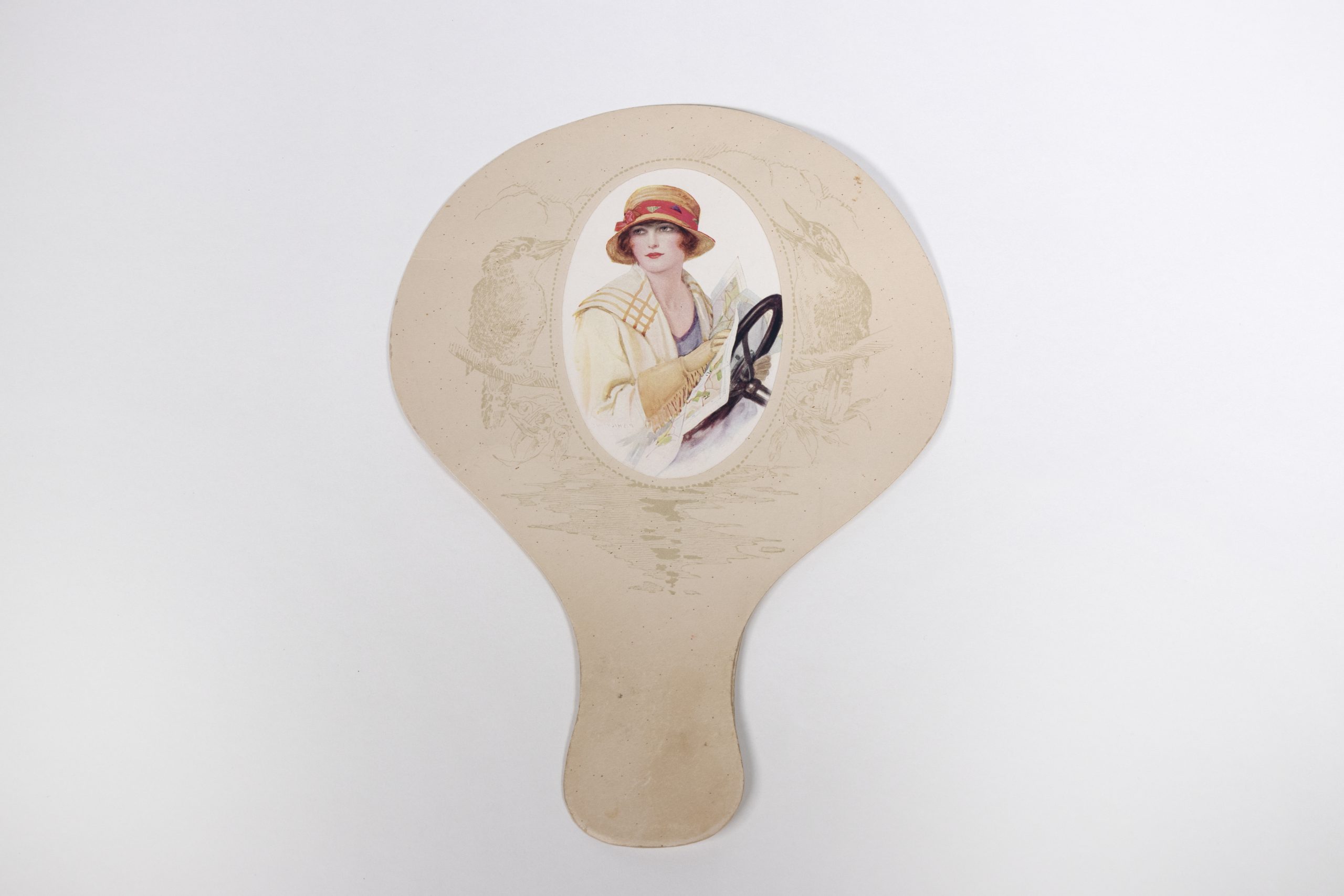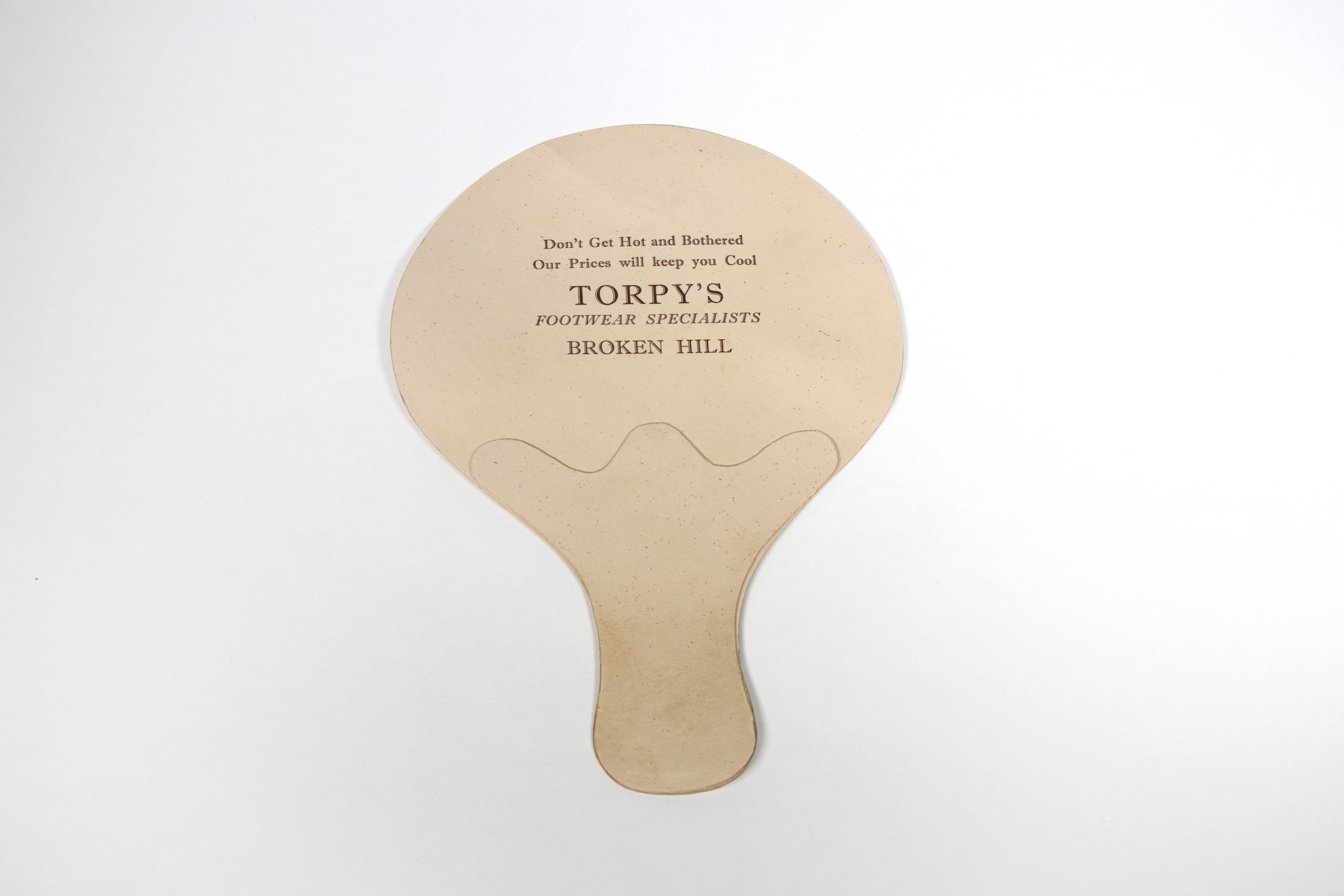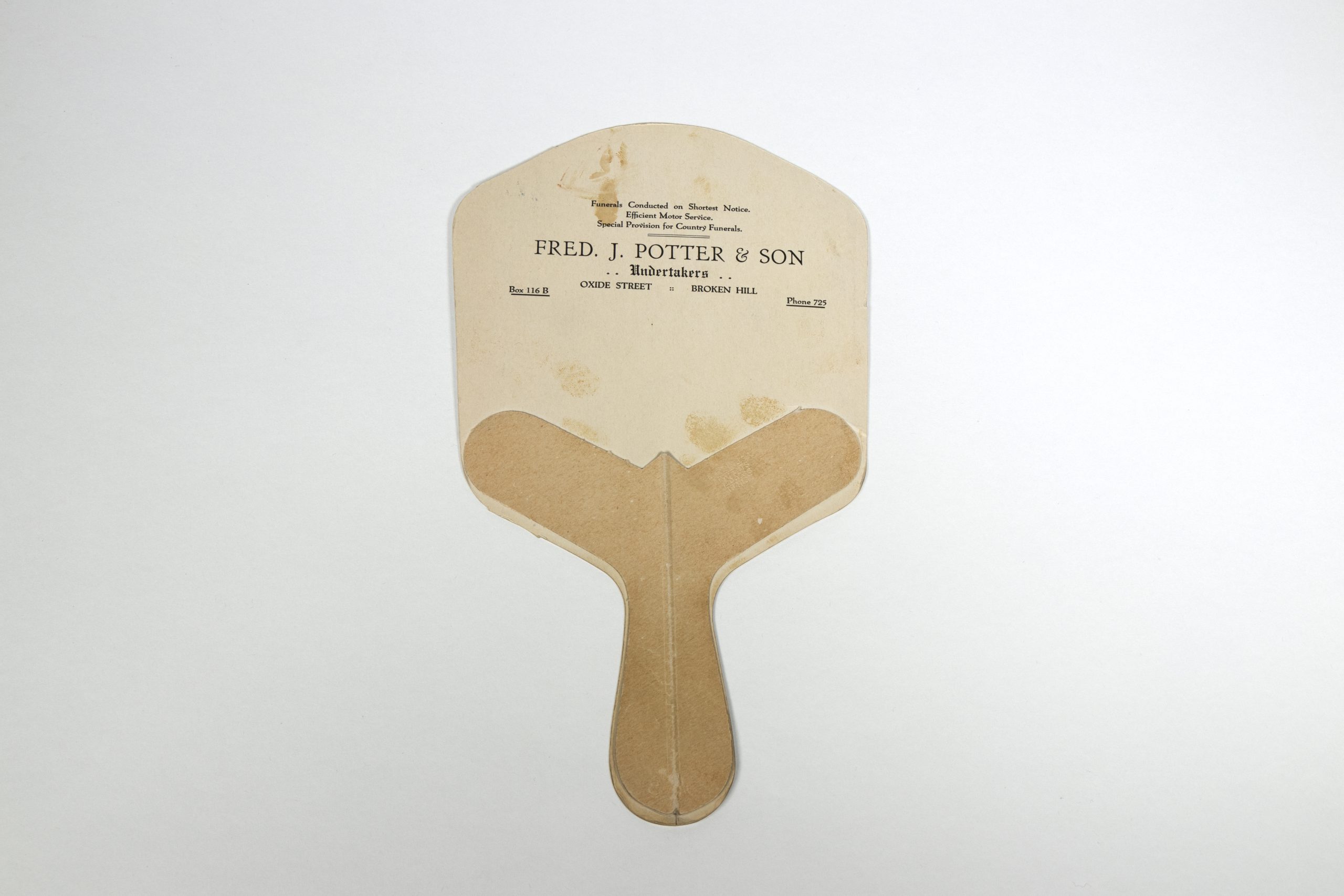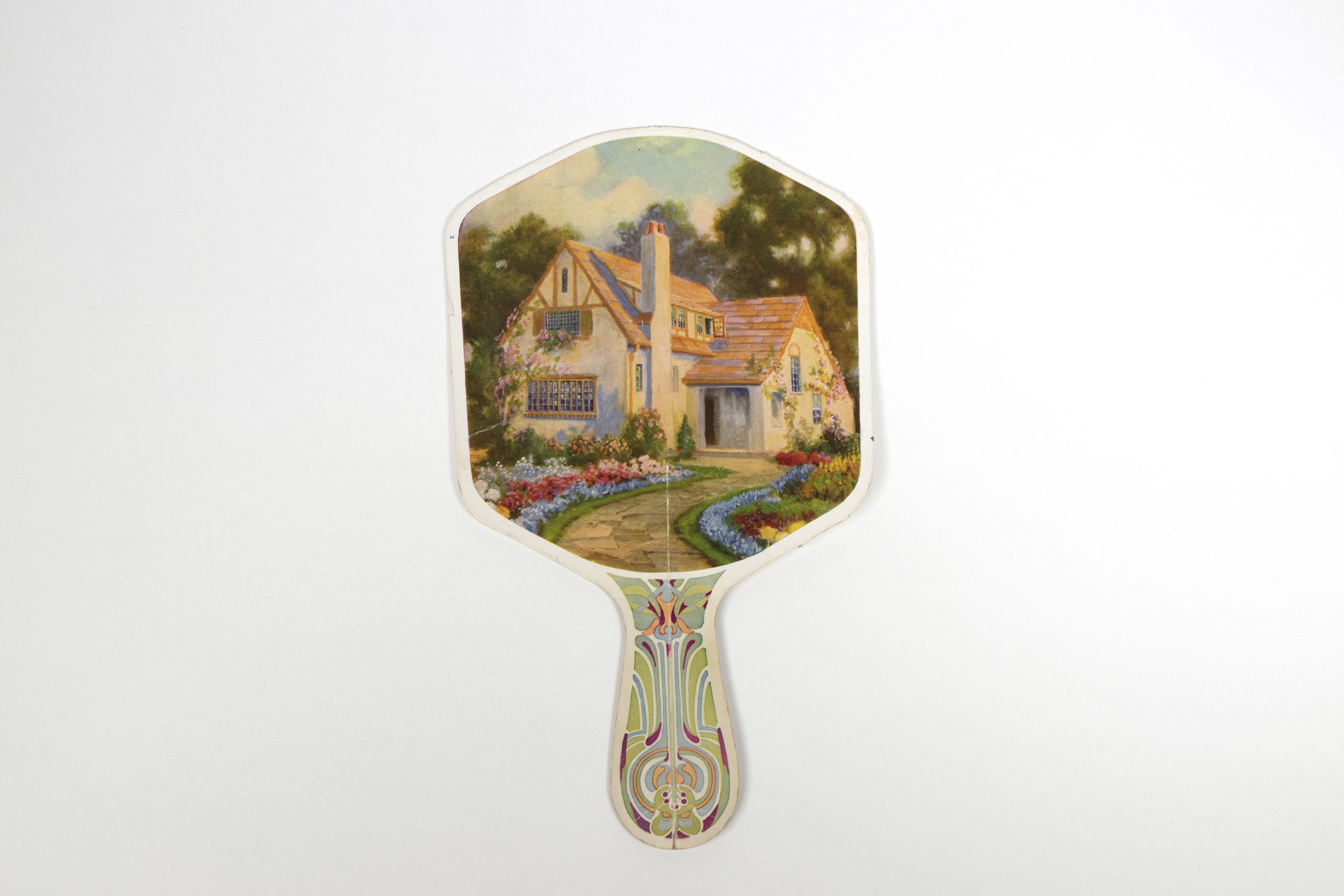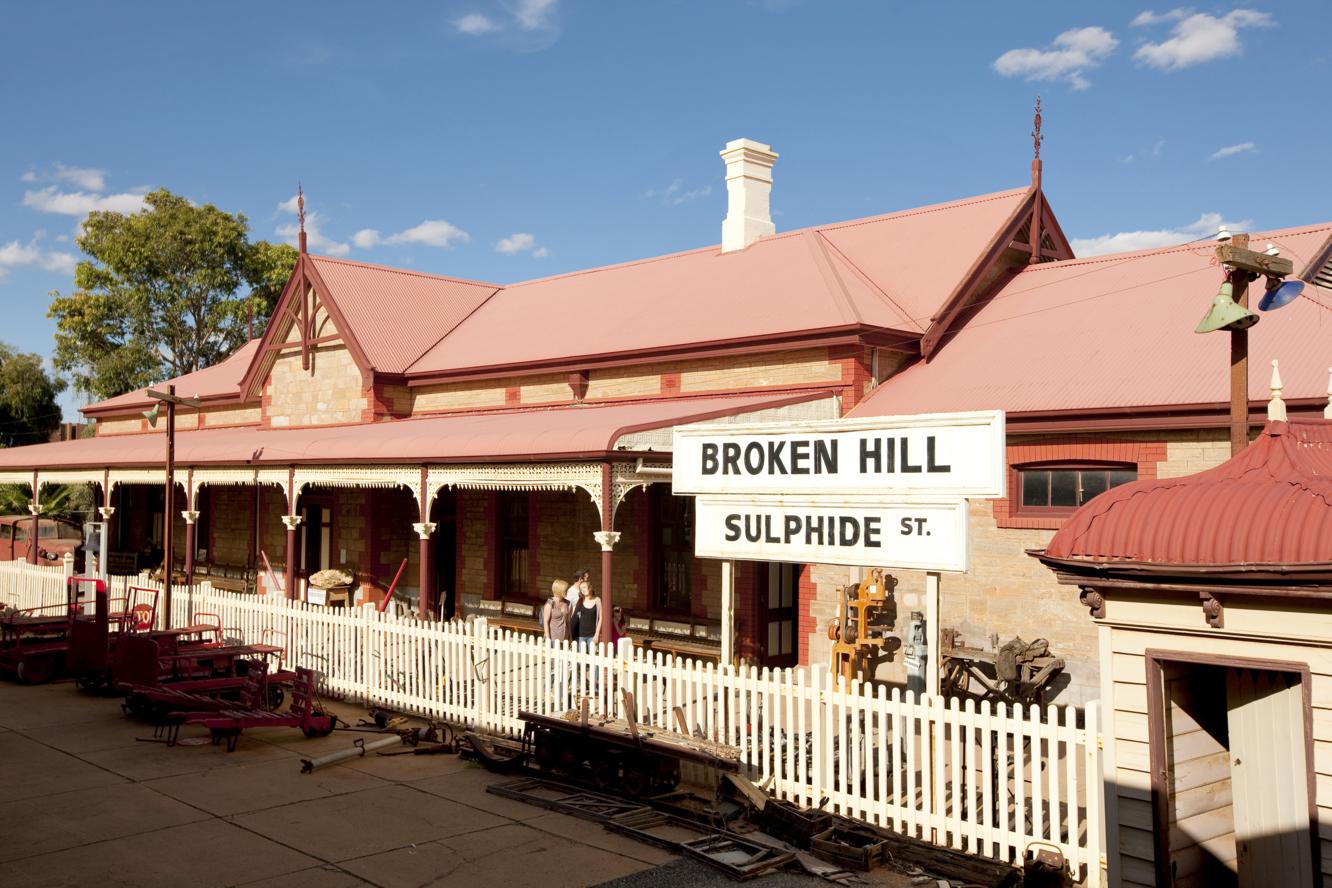Fanning the Retail Flames
Broken Hill's Novel Advertising Campaign
The retailers of Broken Hill embraced advertising fans whole-heartedly during the 1920-30s. It was before the invention of air conditioning and the economies of scale associated with the mass production of printed goods meant that advertising fans were a cheap, cheerful and functional way for retailers to make their businesses known.
The rigid screen fans featured stock designs that are much like the stock photography that can be bought online today. Retailers selected a suitable image and then had their advertising message printed on the back of the fan. Sometimes the use of the off-the-shelf images was miss-matched in an outback context. The Fred J Potter and Son Undertakers fan with its joyful picture of a Tudor home and English cottage garden is an excellent example of this.
In addition to showing us how the retailers of a bygone era advertised, the fans tell us about the history of printing and commercial art. Some of the fans feature prints that comprise several colours and are remarkable examples of the chromolithographic print process. Chromolithography involved the use of a single plate for each colour and special attention needed to be given to the registration, or alignment, of the plates to ensure that the image was clear.
The fans were more than just a way of advertising, Pellow and Moore launched its bonny baby competition, which was open to children up to two years of age, in May of 1930. Pellow and Moore’s Sydney-based fan supplier selected twelve winners from a pool of 150 entries. The competition took place just as Australia plunged headlong into the Great Depression and the £1 entry fee would have been a welcome influx of cash for the store. Pellow and Moore distributed the fans during the week before Christmas 1930, and the winners received an in-store credit creating a captive market of gift buyers.


